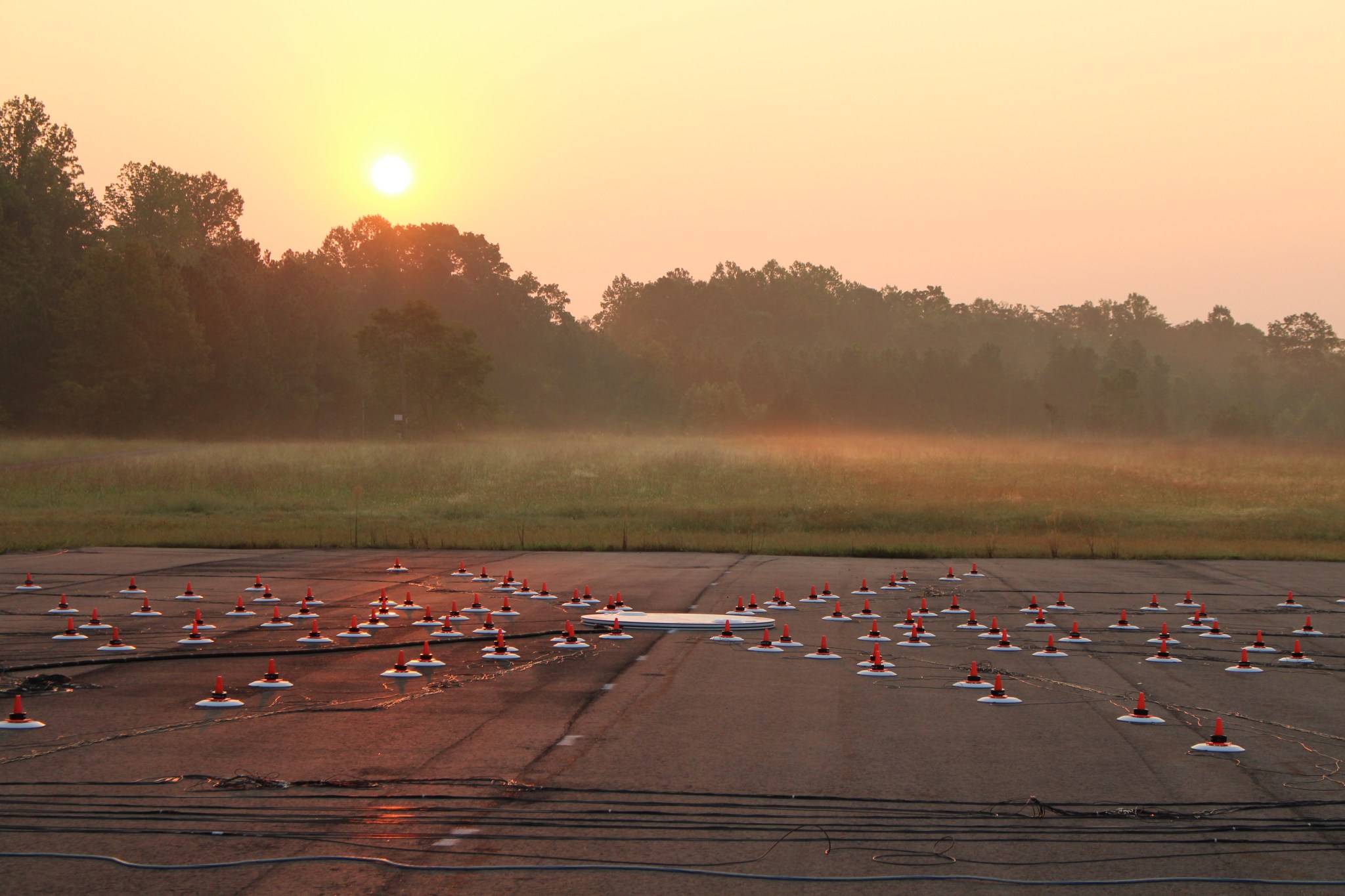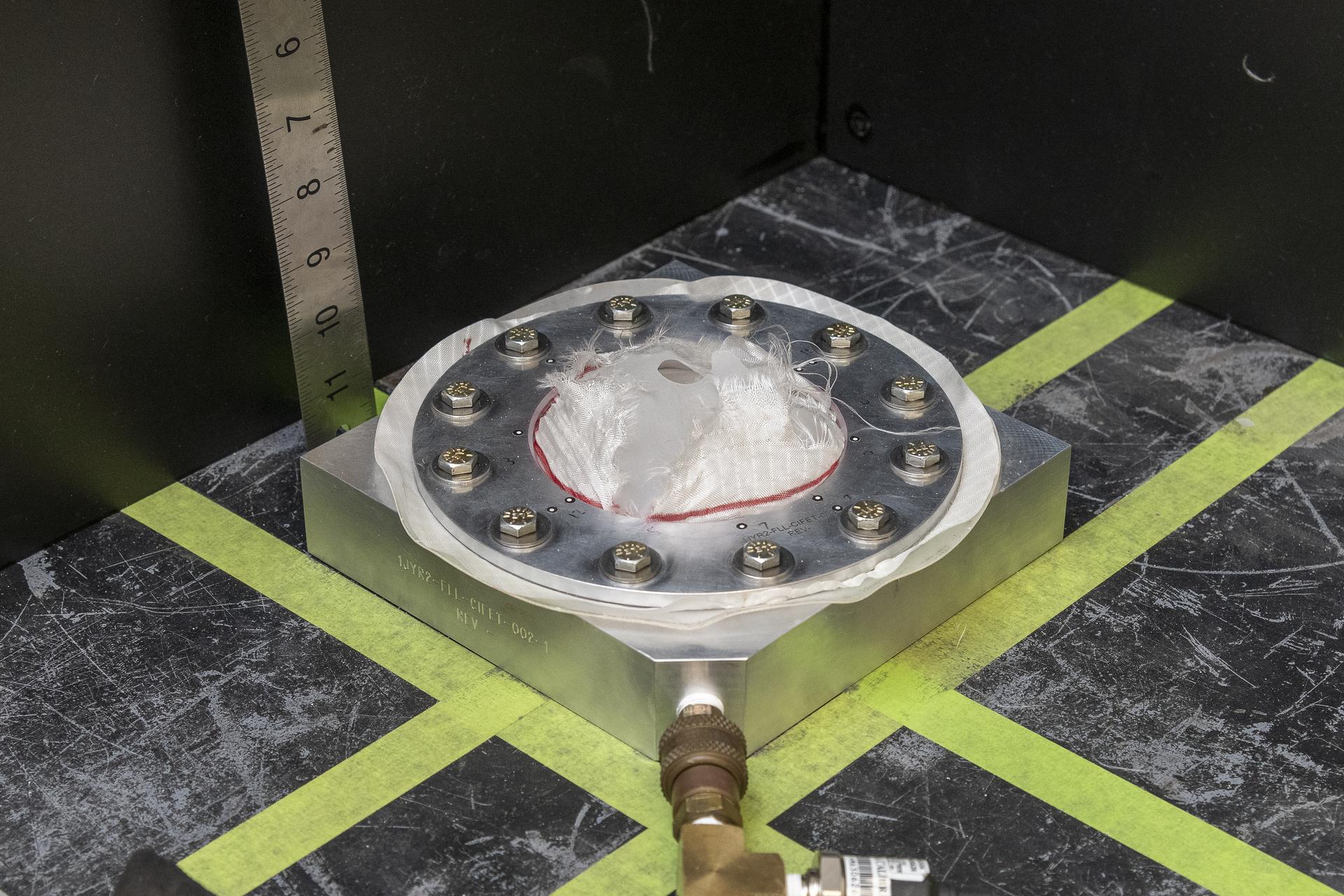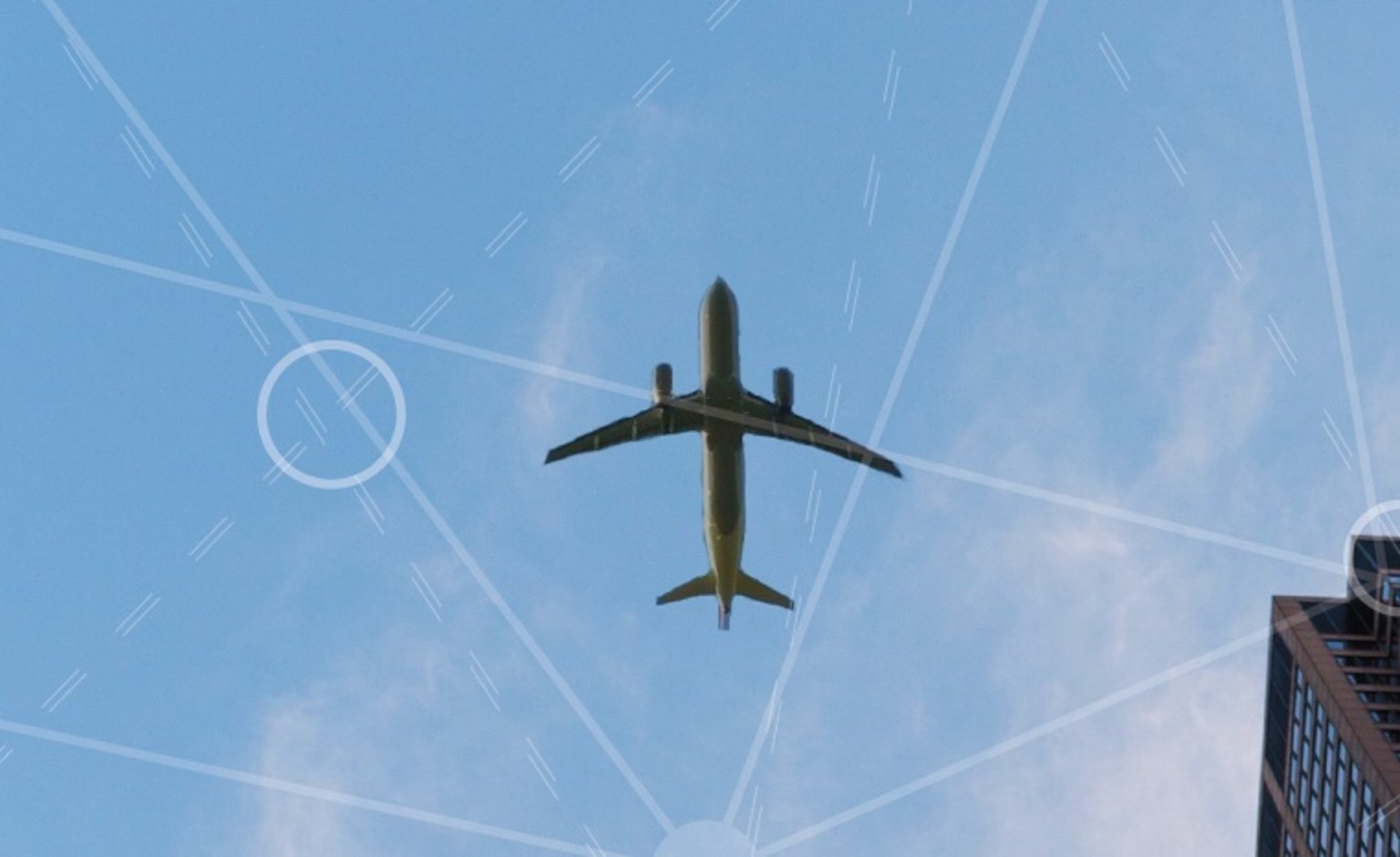NASA-supported wireless microphone array quickly, cheaply, and accurately maps noise from aircraft, animals, and more.
Anyone who lives near an airport or is experiencing the emergence of a cicada brood can quickly identify the source of that ongoing noise. However, running tests to identify the noise created by a new drone or find pests in a field of crops requires a high-tech solution that maps sound.
With help from NASA, Interdisciplinary Consulting Corporation (IC2) introduced a new Wireless Array to do just that – anywhere, anytime. Airplanes undergo noise testing and require certification, so they don’t exceed the Federal Aviation Administration’s noise limits. Each small, saucer-shaped base, called a node, is equipped with an embedded microphone that measures the air pressure changes created by overhead sounds. For a large vehicle like an airplane, hundreds of these sensors, or microphone array, are laid out in a pattern on a runway to monitor the underside of the plane as it flies over.
Interested in making its flight tests more affordable, NASA’s Langley Research Center in Hampton, Virginia, supported the company with Small Business Innovation Research contracts and expert consulting.
“Each node contains a small computer system able to acquire and store data in memory on an SD card. It also has a small web server that allows the end user to start acquisition, stop recording, download files, check on the battery health, and more,” said Chip Patterson, vice president of IC2.
All it takes to operate an individual node or an extensive array is an off-the-shelf wireless access point and a standard laptop with IC2’s software application. The technology integrates into existing noise testing systems.
The microphone can easily be swapped for various other sensor types, like an acoustic sensor, making it possible to monitor animal noises that indicate health and well-being. An infrasonic sensor could measure the noise from supersonic aircraft, identifying the direction and arrival of a sonic boom.
This small, portable technology is finding its way into various projects and applications beyond aircraft testing. Working with an entomologist, IC2 will use acoustic data to listen for high-frequency insect sounds in agricultural settings. Discovering where insects feed on crops will allow farmers to intervene before they do too much damage while limiting pesticide use in those areas. With NASA’s help, IC2’s Wireless Array technology enables sound-based solutions in agriculture, aerospace, and beyond.
































